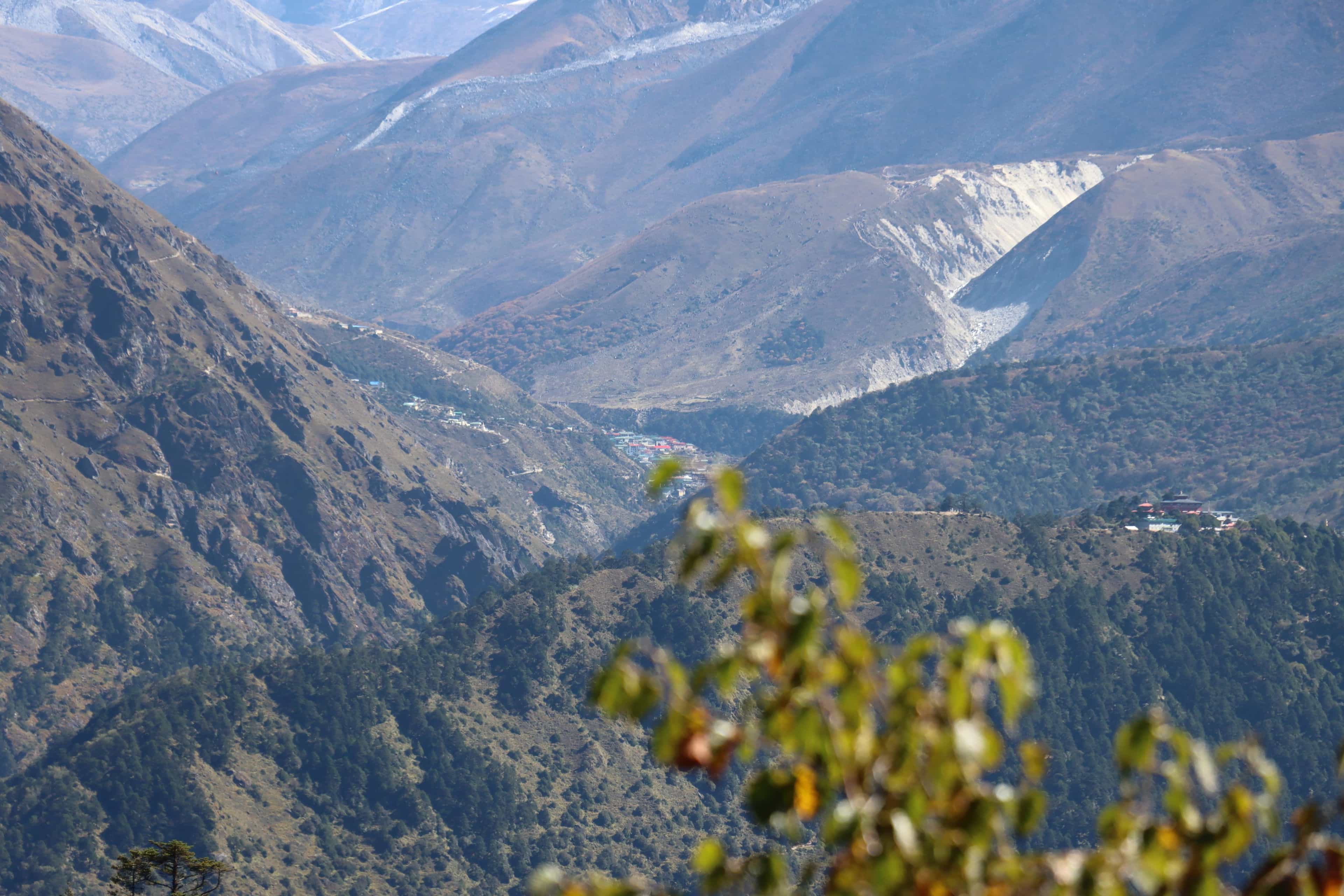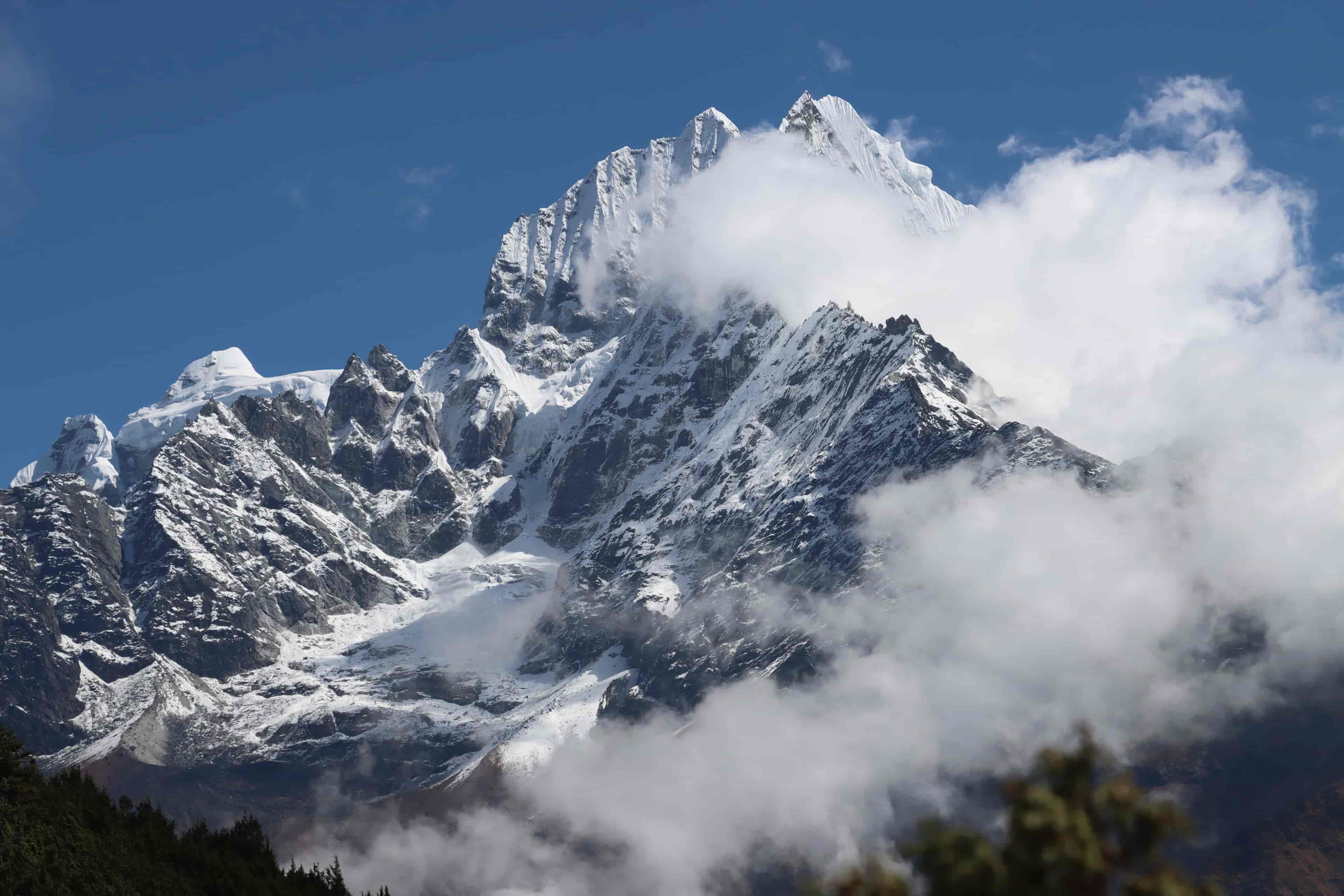



2025-02-21
4 min read
Sitting at an elevation of about 3,860 meters and surrounded by stunning views of the Himalayas, including the towering Mount Everest, Lhotse, and Ama Dablam, Tengboche Monastery is a key stop on the trekking route to Everest Base Camp, making it a popular destination for trekkers and pilgrims alike.
Tengboche Monastery is the largest monastery in the Khumbu region. The Sherpa term for monastery is "Gompa." So the native people of Khumbu call this monastery Tengboche Gompa (also often pronounced as Gomba). Gompas are like a church or temple, a sacred place for worshipping and carrying out various religious ceremonies and rituals.
The monastery sits at the center of the village, in front of a huge, open space, and is easily visible. There is a big, intricately designed gate at the entrance. A gold-colored statue of two deer holding the Wheel of Dharma (Dharmachakka) sits on top of the gate. It symbolizes the first teachings of Buddha, given at Deer Park (Sarnath, India). This statue can also be commonly seen on the roofs of many Buddhist monasteries in Nepal. The entrance gate is followed by a long, gently ascending staircase. As you walk through these steps, it feels like entering a palace.
The monastery itself is a striking building that blends Tibetan Buddhist architecture with the natural beauty of the Everest region. The main structure is a traditional Tibetan-style monastery, built mainly from wood. The building is multi-storied, with a huge prayer hall on the upper floor that is open to visitors and pilgrims.
Inside, the prayer hall is spacious, with high ceilings and beautiful murals on the walls. These murals depict scenes from Buddhist teachings and images of important figures like Buddha and Padmasambhava—often considered the second Buddha and known as Guru Rinpoche among the Sherpas and Tibetans.
You can also find a small museum and a library containing rare Buddhist texts, cultural and religious artifacts, and other items of historical importance inside the monastery. The footprint of Lama Sangwa Dorje, founder of the oldest monastery in Khumbu, can also be seen here. The surrounding area is filled with prayer flags, stone stupas, and chortens, all contributing to the peaceful and spiritual atmosphere.
The scent of incense often fills the air, and butter lamps are frequently lit around the monastery. The environment exudes a sense of calm and reverence.
In the monastery, the head lama and other senior monks offer teachings to the local community and visitors. These include lessons on Tibetan Buddhism, meditation practices, and living a life of compassion and mindfulness.
While primarily a spiritual center, Tengboche Monastery also serves as a cultural hub for the Sherpa people, the indigenous community of the region. They have a deep connection to Tibetan Buddhism and regularly visit to pray, seek blessings, and participate in rituals and festivals.
The monastery is also an important stop for trekkers wanting to learn about Buddhist practices and experience Sherpa culture. Major festivals such as Tibetan New Year (Losar) and the Mani Rimdu festival are celebrated with special rituals and events.
The area around Tengboche is a blend of rugged mountains and lush forests filled with pine, rhododendron, and juniper trees. It's one of the last places where you can experience vibrant greenery before the trail ascends into rocky, high-altitude landscapes.
Visiting Tengboche Monastery is a memorable experience—whether you're trekking through the region or exploring its culture and spiritual heritage. It offers incredible mountain views, cultural depth, and quiet moments in a mystical setting.
In all, Tengboche Monastery and its surroundings offer a beautiful blend of towering peaks, tranquil forests, sacred customs, and vibrant Sherpa traditions—making it one of the most iconic places in the Himalayas.
Note: The monastery has been rebuilt several times after being damaged by fires and earthquakes.
© 2026 5k Treks Pvt. Ltd. All rights reserved.